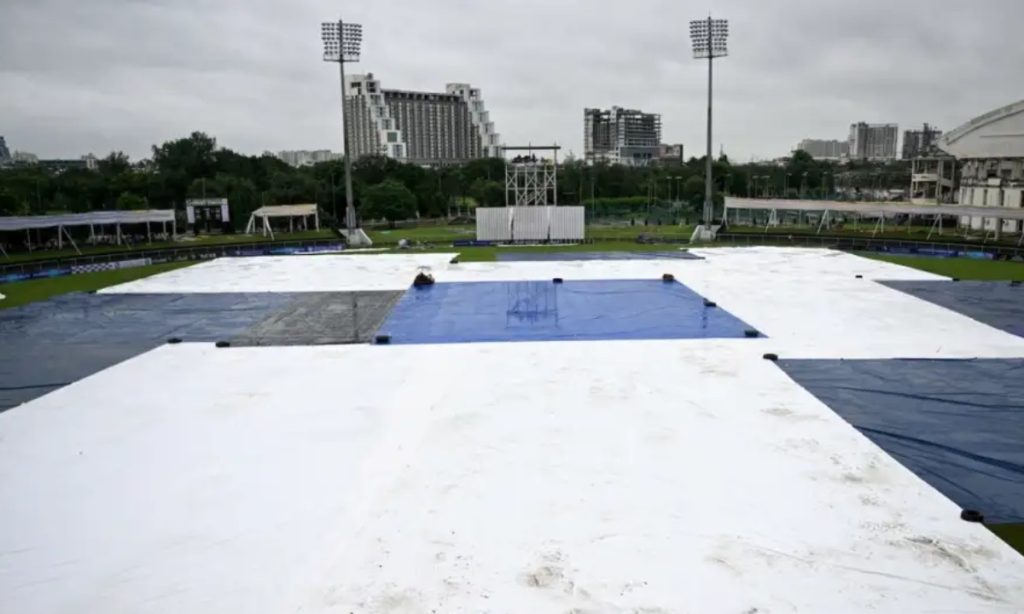In a historic twist that cricket fans and historians will remember for years, the Test match between AFG vs NZ in Noida was abandoned without a single ball being bowled, marking the first such occurrence in 91 years. This event, which unfolded at the Shaheed Vijay Singh Pathik Sports Complex, not only highlighted the unpredictability of weather but also raised questions about venue selection for international matches.
The match, eagerly anticipated as the first Test between AFG vs NZ, was supposed to be a milestone in cricketing relations between the two nations. However, relentless rain and a wet outfield conspired against any play, leading to the abandonment of all five scheduled days. This scenario was not just a disappointment for the teams and fans but a rare footnote in cricket’s annals, where only seven other instances in Test history have seen matches called off without play.
The decision to abandon the match was not taken lightly. Umpires, after multiple inspections and in consultation with match officials, deemed the conditions unsafe for play. The ground, despite efforts to dry it, remained sodden, with the drainage system proving inadequate against the heavy rainfall that plagued the region. This situation led to significant criticism regarding the choice of venue, especially since the Greater Noida stadium had previously faced scrutiny for its facilities.
The implications of this abandonment go beyond the immediate disappointment. For Afghanistan, who were playing on neutral ground due to their inability to host international matches at home, this was meant to be a significant moment in their cricketing journey. New Zealand, embarking on a subcontinental tour, faced an unexpected start, with their players and staff confined to practice sessions and waiting for conditions that never improved.
From a historical perspective, this event underscores the challenges of hosting cricket in regions where weather can be an unpredictable adversary. The last time a Test match was abandoned before it began was in 1938, highlighting how rare and impactful this event is. Cricket boards and venue selectors now face renewed scrutiny over the infrastructure and readiness of grounds, especially for Test matches where weather plays a crucial role.
The aftermath saw social media platforms, particularly X, abuzz with reactions. Fans expressed their disappointment, while cricket analysts discussed the broader implications for the sport’s scheduling and venue management. There were calls for investigations into how such a venue was selected, pointing towards a need for stricter criteria for hosting international cricket.
This episode in Noida will be remembered not just for what didn’t happen but for the discussions it sparked about the future of Test cricket in the face of environmental challenges. While cricket lovers hope for better days, this match, or rather its absence, will remain a curious chapter in the sport’s rich history, a reminder of nature’s occasional veto over human plans.

